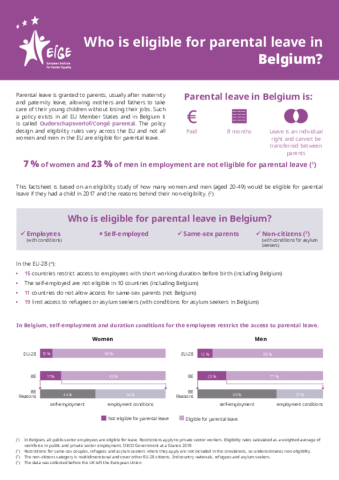Parental leave is granted to parents, usually after maternity and paternity leave, allowing mothers and fathers to take care of their young children without losing their jobs. Such a policy exists in all EU Member States and in Belgium it is called Ouderschapsverlof/Congé parental. The policy design and eligibility rules vary across the EU and not all women and men in the EU are eligible for parental leave.
Read more
Factsheet: Who is eligible for parental leave in the EU-28?
Factsheets: Eligibility for parental leave in EU Member States
